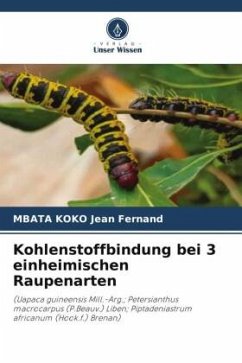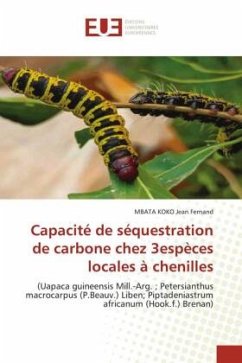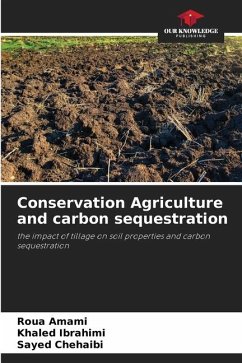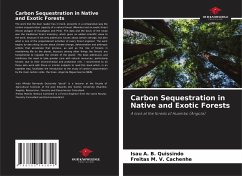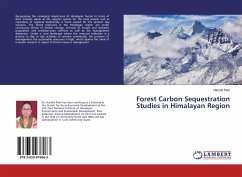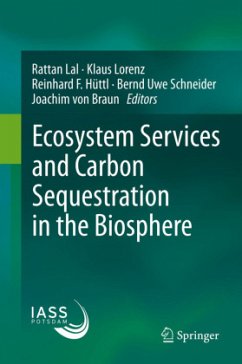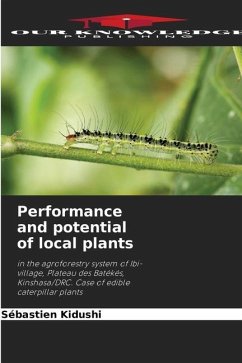
Carbon sequestration capacity of 3 local caterpillar species
(Uapaca guineensis Mill.-Arg. ; Petersianthus macrocarpus (P.Beauv.) Liben; Piptadeniastrum africanum (Hook.f.) Brenan)
Versandkostenfrei!
Versandfertig in 6-10 Tagen
29,99 €
inkl. MwSt.

PAYBACK Punkte
15 °P sammeln!
This work was based on the carbon sequestration capacity of indigenous caterpillar species, namely: Uapaca guineensis, Piptadeniastrum africanum, Petersianthus macrocarpus, against an exotic species Acacia auriculiformis, whose carbon storage capacity is already known. The aim of this work is to recommend the best species with a high carbon sequestration capacity for agroforestry and/or afforestation/reforestation with carbon sinks. Samples of these three caterpillar species were collected at the INERA KIYAKA station. The results of this study were obtained through observation, description and...
This work was based on the carbon sequestration capacity of indigenous caterpillar species, namely: Uapaca guineensis, Piptadeniastrum africanum, Petersianthus macrocarpus, against an exotic species Acacia auriculiformis, whose carbon storage capacity is already known. The aim of this work is to recommend the best species with a high carbon sequestration capacity for agroforestry and/or afforestation/reforestation with carbon sinks. Samples of these three caterpillar species were collected at the INERA KIYAKA station. The results of this study were obtained through observation, description and experimentation. This approach began in the field, in the laboratory and ended in the office. A simplified reading of the analysis results reveals that among the local species studied, compared with the exotic species, there is no significant difference in terms of carbon sequestration, but the numerical results place Uapaca guineensis ahead of the others with 330.6434 kg of C/ft.



